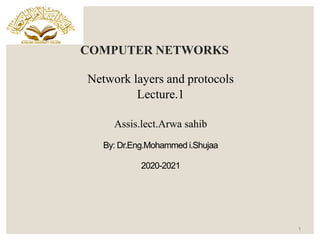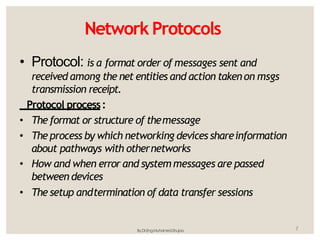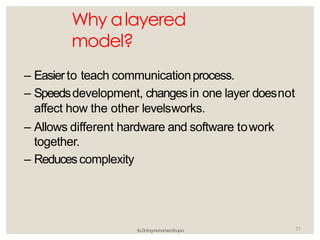This document provides an overview of computer network layers and protocols. It discusses the OSI reference model and its seven layers - physical, data link, network, transport, session, presentation, and application layer. It describes the functions of each layer and some examples of protocols used. The document also covers topics like connection-oriented vs connectionless services, network architectures, and network goals of communication and resource sharing.


































